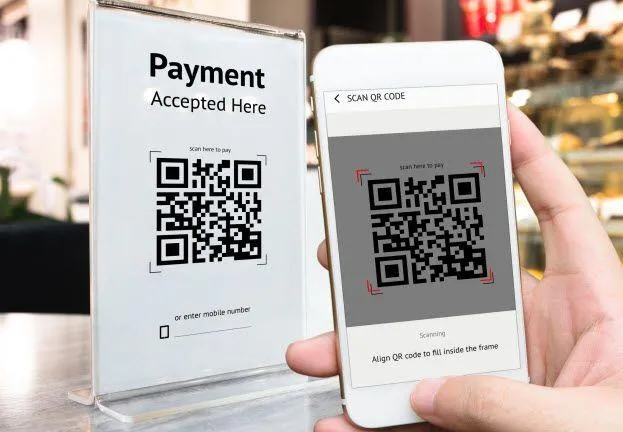
Businesses Are Being Targeted by QR Code Scams: How to Stay Safe
Businesses Are Being Targeted by QR Code Scams: How to Stay Safe
These days, QR codes are used in everything from marketing materials and restaurant menus to event check-ins and payments. Particularly in a post-COVID world where contactless interactions are common, they provide speed and convenience. However, there is a drawback to this ease: cybercriminals are increasingly using QR codes to defraud companies.
These threats are no longer limited to consumers; QR code scams are now directly targeting businesses, breaching devices, stealing login credentials, and getting around conventional security measures. Your entire company may be at risk if your staff or clients scan the incorrect code.
Let's examine how these frauds operate, why companies are now frequently targeted, and what you can do to protect yourself.
The Operation of QR Code Scams
Fundamentally, phishing emails and QR code scams operate similarly, but with a twist. The user uses their phone or tablet to scan a code rather than clicking on a dubious link, which leads them to a malicious website or downloads dangerous software.
Here are some typical attack techniques:
Fake Login Pages: When a user scans a QR code, they are taken to a fake version of a genuine website (such as Dropbox, Google Workspace, or Microsoft 365), where they are prompted to log in and unintentionally provide their login information.
Payment Redirection: Both small businesses and nonprofit organizations have experienced this phenomenon, where QR codes intended to collect payments or donations are substituted with codes that transfer money to a scammer's account.
Malware Delivery: When a device is connected to a network, certain QR codes start the download of malicious apps or files, which can then propagate throughout the network.
Physical Code Replacement: In locations where businesses depend on QR check-ins or payments, cybercriminals place fake QR code stickers over authentic ones on signs, posters, or even digital screens.
The Reasons Behind Targeting Businesses
1. Employee Confidence in Internal Resources
Workers might believe a QR code on a sign or flyer from the company is secure. A device on your network may be compromised by the scan if a malicious sticker is applied over the original.
2. Risks Associated with BYOD
Policies that allow users to bring their own devices may facilitate the spread of scams. Damage can quickly increase if an employee connects to your company network after scanning a malicious code on their personal phone.
3. Broad Acceptance
Companies use QR codes for a variety of purposes, such as visitor logs, conference check-ins, HR forms, and Wi-Fi access. Attackers can take advantage of a larger surface area when the use is more widespread.
4. Insufficient Visibility
QR codes are difficult to preview, in contrast to conventional phishing links. The user has no way of knowing whether the code is secure unless they use a QR scanner that displays the URL before accessing it, which makes it an ideal tool for attackers.
Examples from the Real World
By sending phony delivery notifications with QR codes, logistics companies were the target of a series of QR code phishing attacks in 2024 that resulted in credential theft.
Retailers have reported fraud cases in which con artists used phony product return QR codes to obtain customer information and divert refund funds.
How to Guard Against QR Code Scams for Your Company
Train Your Staff
Educate your employees about QR code scams. Instruct them to double-check company materials for tampering, especially in public areas, and to avoid scanning codes from unknown sources.
Make Use of Reliable QR Code Generators
Use only trustworthy generators and secure URLs (HTTPS) when using QR codes for digital menus, internal forms, or marketing. To assist users in confirming authenticity, think about adding your logo to your QR codes.
Put Mobile Device Management (MDM) into practice.
To keep an eye on and manage mobile devices that access your company's systems, use MDM software. This can assist in separating and containing threats from employee phones that have been compromised.
Check Out QR Links Before Going
Encourage staff members to use apps or scanners that display a preview of a link before they click on it. Users of many contemporary phones can examine the URL first by holding down the QR result.
Public Signage That Is Physically Secure
Check QR codes frequently for tampering if you use them in signage that is visible to the public. This covers product displays, check-in posters, event signage, and restaurant menus.
Limit Accessible Scanned Codes
Use user verification procedures and multi-factor authentication (MFA) if your company uses QR codes for login or data access. These measures will make it more difficult for hackers to cause harm using credentials that have been stolen.
Although QR codes aren't dangerous by nature, they can be misused, just like any other technology, if companies don't handle them with the same caution as links or downloads. The most important lesson? It can be spoofing if it can be scanned.
Make sure your staff and clients are aware of scams and that your company is implementing the appropriate security measures as QR codes become more ingrained in your operations.